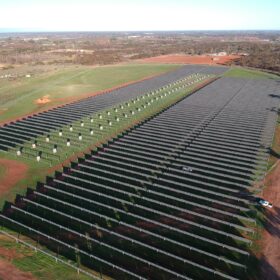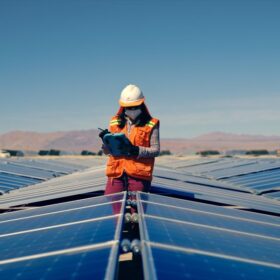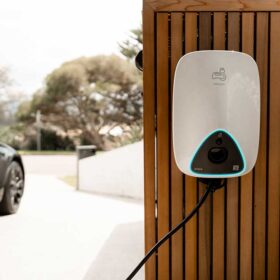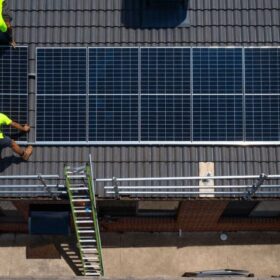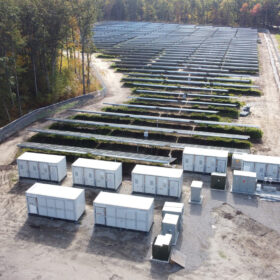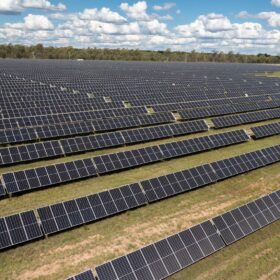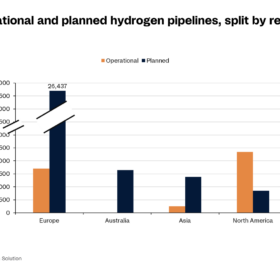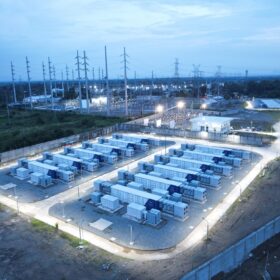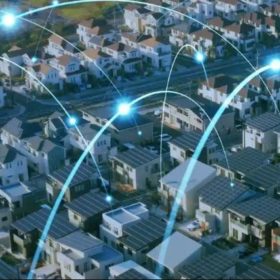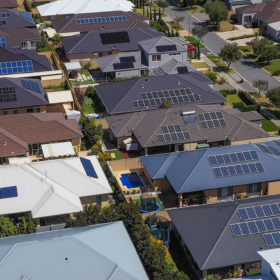DC-coupled hybrid project brought online in SA as retailer moves into mid-scale development
A South Australian racecourse has now become a fully operational DC-coupled solar and battery farm. The Berri Energy Project, owned by retailer Flow Power, is part of the company’s strategy to build up to 50 MW of mid-scale (sub 5 MW) projects to supplement its offtake portfolio, Flow Power COO Byron Serjeanston told pv magazine Australia.
Miner provides shot in the arm for Sun Cable mega project
Sun Cable’s troubled $30-plus billion (USD 20 billion) mega solar and storage project has received a welcome boost with resources company Tivan announcing it has penned a deal with the developer for the potential offtake of up to 300 MW of renewable electricity to support a planned critical minerals processing facility in the Northern Territory.
Schneider unveils new EV charger for home use
French power electronics specialist Schneider Electric has announced the Australian launch of a new electric vehicle charger that incorporates new features aimed at making at-home charging easier to install and more cost-effective to use.
Solar installer fined $32,000 after ignoring fall risk
A Victorian solar installer that ignored a seven-metre fall risk on a job site in Geelong has been convicted and ordered to pay almost $40,000 after pleading guilty to three charges under the Occupational Health and Safety Act.
Top five battery energy storage system design essentials
Before beginning BESS design, it’s important to understand auxiliary power design, site layout, cable sizing, grounding system and site communications design.
Final panel installed as Australia’s largest solar farm nears full capacity
Three years after French renewable energy developer Neoen first broke ground at the site of its Western Downs Green Energy Hub in Queensland’s Western Downs region, the last of the more than one million panels has been installed as the 400 MW solar farm nears 100% completion.
Global hydrogen pipeline projects to surge by 2035, says Rystad
Norwegian consultancy Rystad Energy says that hydrogen pipelines will be “far better” than vessels at moving hydrogen over short- and medium-range distances in the years ahead.
San Miguel edges closer to delivering 1 GW battery fleet in Philippines
San Miguel, which is now behind on its original plan to deliver a 1 GW/1 GWh fleet of battery energy storage systems (BESS) by the end of 2022, continues to roll out big batteries across 32 sites in the Philippines, in order to integrate up to 5 GW of renewables into the island nation’s grid.
VPP participation appears overblown with questionable fleet inclusions
Virtual Power Plants, or VPPs, are relatively mature in Australia due to the country’s high penetration of, and familiarity with, distributed energy resources. But claims of VPP success and participation may be overblown, with a considerable gaps between the numbers some platforms are claiming and the realms of possibility.
WA increases electricity supply for regional households after rule change wreaks havoc
Western Australia will now offer rural and metro-area residents in its main grid the same electricity supply. The move comes after a seemingly innocuous rule change saw regional customers unable to run their air conditioning at the same time as their cooktops – a drama pv magazine Australia first reported in July 2022 which led to sustained community pressure.
